GO Guangdong Route:
Zili Village→Mingshi Lou→Cangdong Village→Mume Design→Librairie Avant-Garde
A glimpse of Kaiping Diaolou and Villages
Guangdong's Jiangmen City has long been a popular tourist destination, attracting visitors from home and abroad due to its iconic Kaiping Diaolou and Villages. Recognized as a UNESCO World Cultural Heritage Site, Kaiping Diaolou and Villages features multi-storey defensive houses that showcase a complex and vibrant fusion of Chinese and Western architectural and decorative styles.
Dating back to the late Ming Dynasty, the Diaolou reached their peak during the 1920s–1930s. Over time, many of the once-thriving buildings were overrun with weeds. How to keep the World Cultural Heritage Site alive? In Tangkou, a town boasting 536 registered Diaolou, the local government, NGOs, and architects have developed strategies that enable communities to flourish within these historic spaces.
Zili Villages: Stories of overseas Chinese told through conservation efforts
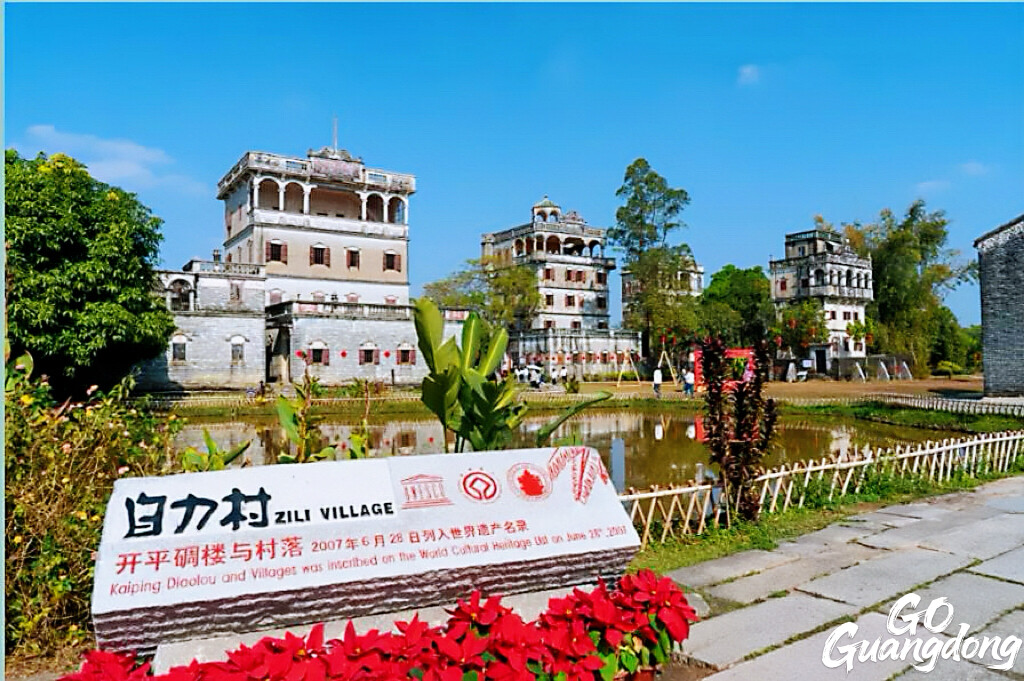
Zili Village, Tangkou Town, Jiangmen City
In the mid-19th century, farmers from Jiangmen’s Kaiping and surrounding areas, went overseas for opportunities due to economic hardship. Amid devastating floods and rampant banditry, overseas Chinese who had accumulated savings returned or remitted funds to build Diaolou. These buildings take three forms: communal towers built by several families and used as temporary refuge, residential towers built by individual rich families and used as fortified residences, and watch towers.
Zili Village, located in Tangkou Town, is home to one of the most concentrated clusters of Diaolou, featuring nine watchtowers and six fortified residences, most of which were built in the 1920s and 1930s.
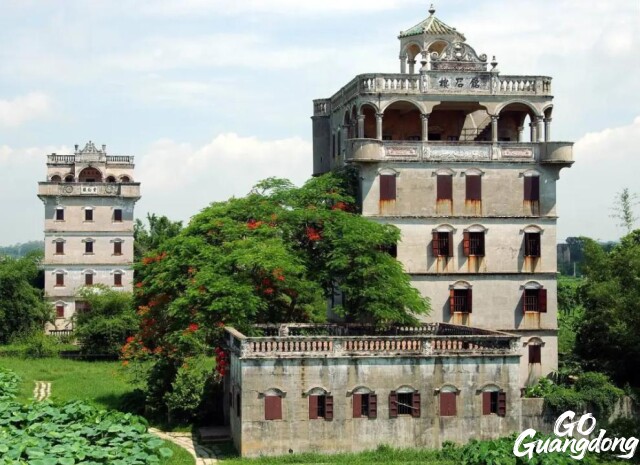
Mingshi Lou (R) in Zili Village. The structure features walls made of reinforced concrete gray bricks, with doors and windows crafted from thick imported steel plates.
Mingshi Lou, built in 1925 by overseas Chinese Fang Runwen, a villager who earned his living in the U.S., is the most exquisite Diaolou in Zili Village. The stunning tower showcases both grand exteriors and lavish interiors, with its original furniture and daily objects preserved intact. It serves as a vivid testament to the culture and lifestyles of early Chinese diaspora.
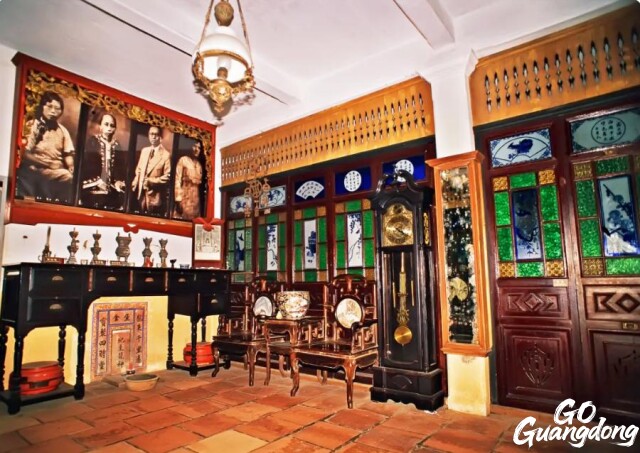
Italian stained glass partitions and western-styled clock and ceiling lamp
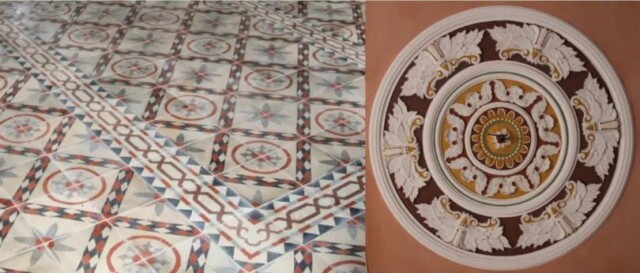
Italian floor tiles and gray sculpture lamp-shadow floral decorations
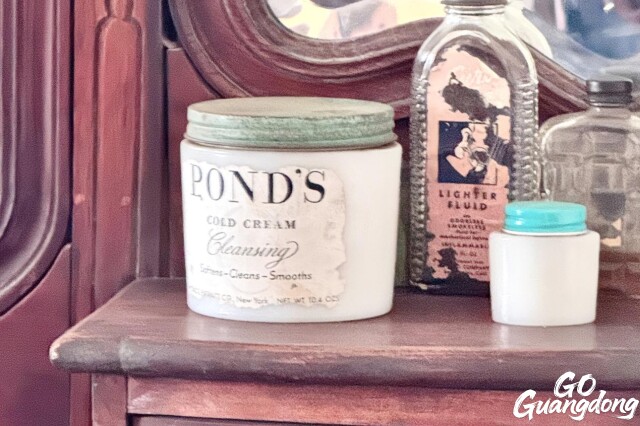
The Pond’s cleaning cream was found in Mingshi Lou.
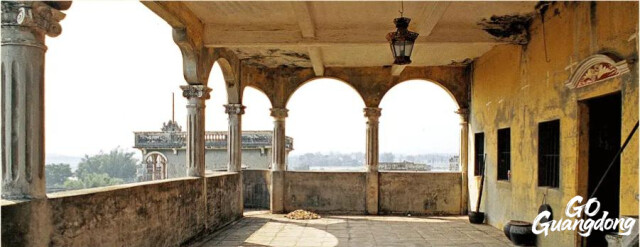
The veranda of Mingshi Lou features columns designed in a Western architectural style.
Beyond exquisite Lingnan-style woodwork, such as carved rosewood chairs and cabinets, the building houses valuable imported luxuries. These artifacts narrate a unique East-West cultural fusion, reflecting Fang's transnational experiences as a Chicago entrepreneur who blended Cantonese traditions with global influences.
In late 1948, Fang Runwen passed away in the United States. Five years later, in 1953, the Fang family relocated to both the United States and Hong Kong. Overnight, the tower stood empty and silent.
Fifty years later in 2005, Fang Yaozhen and Fang Yaozhu returned from the U.S. and Hong Kong. They signed a trusteeship agreement with Kaiping Municipal Government for Mingshi Lou's management. Recognized as Zili Village's finest-preserved Diaolou with luxurious interiors, it became a key UNESCO evaluation site during Kaiping's World Heritage assessment and now draws many visitors.
Facing the challenge of maintaining privately owned watchtowers abandoned by overseas owners, the Kaiping government pioneered an innovative "Ownership Stays, Government Manages" model, through which authorities contact with emigrant owners and secured restoration agreements.
Following the UNESCO World Heritage designation in 2007, conservation efforts accelerated. According to the Guangdong Kaiping Diaolou Tourism Development Co., the Agricultural Bank of China provided a strategic credit line of 400 million RMB for upgrading the sites. This financial support generated sustainable momentum for the adaptive reuse of these architectural treasures.
Cangdong Village: Rural community revitalized through heritage protection
Cangdong Village is about 4 kilometers away from Zili Village. Constructed by returning overseas Chinese, Cangdong’s homes, ancestral halls, and Diaolou form a kind of living museum. However, as some residents emigrated overseas while others have gone to look for higher-paying work in nearby cities since the 1980s, many of the once-thriving houses were crumbling or overrun with weeds.
To preserve the village, Selia Tan, preservationist and professor of Wuyi University, launched the Cangdong Project in 2009. Leading like-minded individuals from various sectors, she drew on overseas heritage conservation practices to restore historic architecture and foster community building in Cangdong Village.
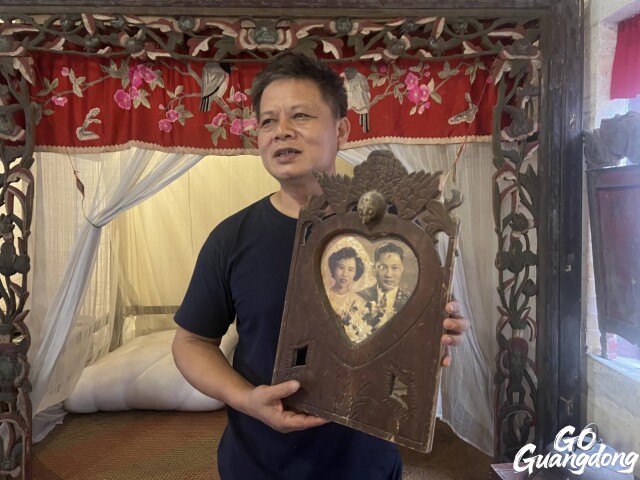
Shen Yimin, Director of the Cangdong Project, shares insights into the relics inside the revitalized ancestral hall.
Starting from 2011, Tan united the strength of colleges and universities, enterprises and government, and restored two ancestral halls, one Diaolou, two ancient residential buildings, and rebuilt one ancient temple. They not only repaired the cultural relics, but also enhanced the community unity and cultural identity, enabling the traditional lifestyle and culture to be inherited.
“We didn’t want to just preserve the village’s stunning architecture; we wanted to preserve its history and environment, its way of life, and the very spirit of the place,” said Tan. To that end, Tan established the Cangdong Heritage Education Center. From 2014, the Center has hosted open-access workshops on heritage conservation, partnering with global universities and institutions to spark dialogue across communities.
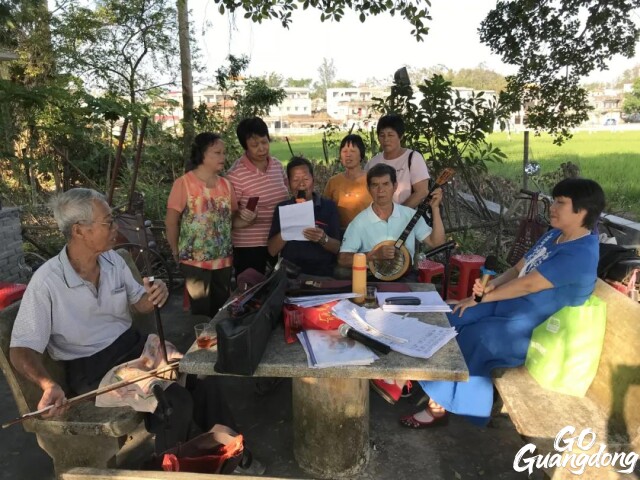
Cangdong villagers gather for folk music performances under ancient banyan trees.
With collaboration among local governments, villagers, the public, and academic institutions, the center has established a training model that includes public capacity building, professional academic training, and grassroots cultural transmission. Their efforts culminated in 2015 when the village received UNESCO’s Cultural Heritage Conservation Award for outstanding revitalization.
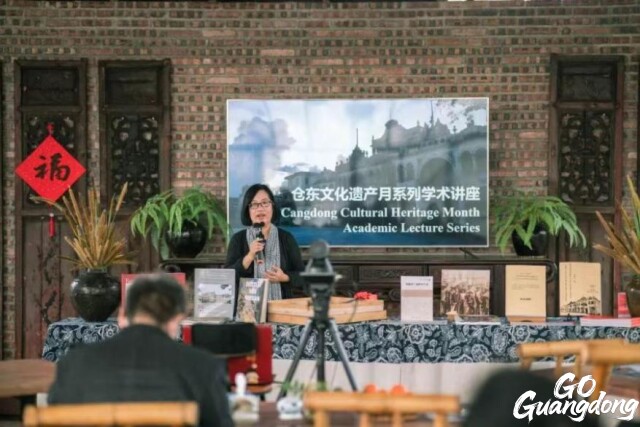
Academic lectures are organized in Cangdong Village on a regular basis.
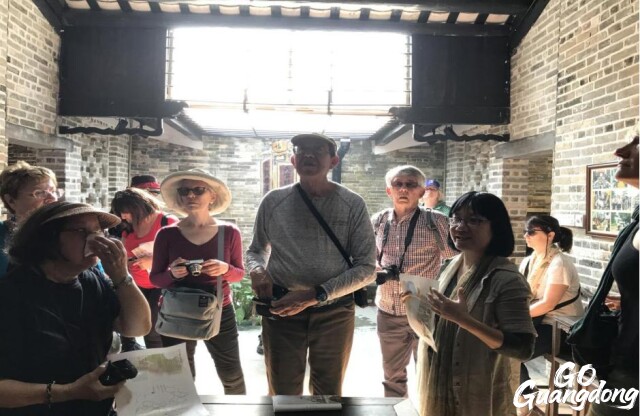
Australian Chinese participate in cultural and bloodline roots-seeking activities organized by the Cangdong Heritage Education Center in 2018.
Mume Design: Architectural designs spark social participation
Once plagued by a population decline to just nine households, Tangkou Xu Village now boasts a thriving community of over 2,000 residents. In recent years, the village has successfully attracted new inhabitants through the promotion of cultural and tourism initiatives, as well as innovative design projects.
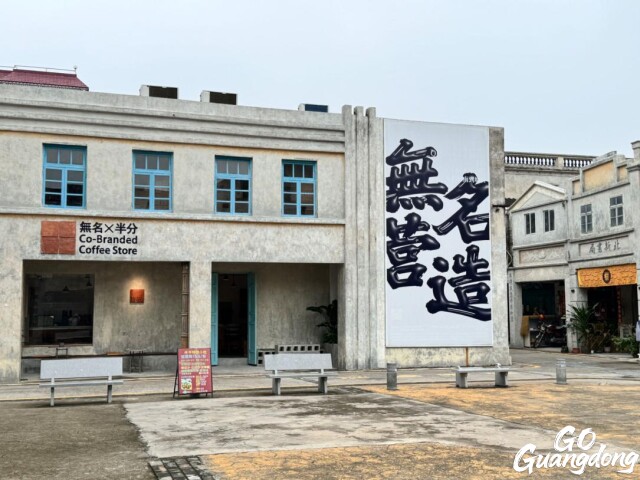
The studio of Mume Design in Tangkou Xu
Mume Design, initially founded in Kyoto, Japan, is an architectural firm dedicated to contemporary rural architectural practices, excavating local folk architectural wisdom. In 2022, the firm established a studio in Tangkou Xu, serving as its office space, promotion room, and a themed café open to the local community and tourists.
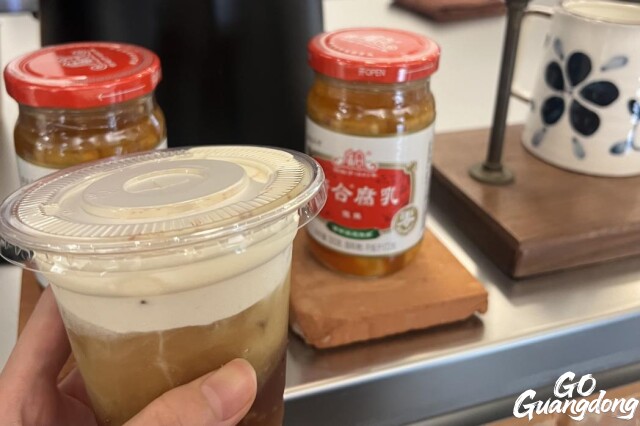
A unique type of coffee topped with fermented bean curd, also known as Chinese cheese, is served at Mume Design Studio. The fermented bean curd brand, Guanghe (廣合腐乳), is a century-old local brand established in 1893 and gained popularity overseas due to immigrants from Jiangmen.
In Tangkou Xu, Mume Design is trying to integrate local culture, craftsmanship, and sustainable practices into its rural revitalization projects, balancing heritage preservation with economic development.
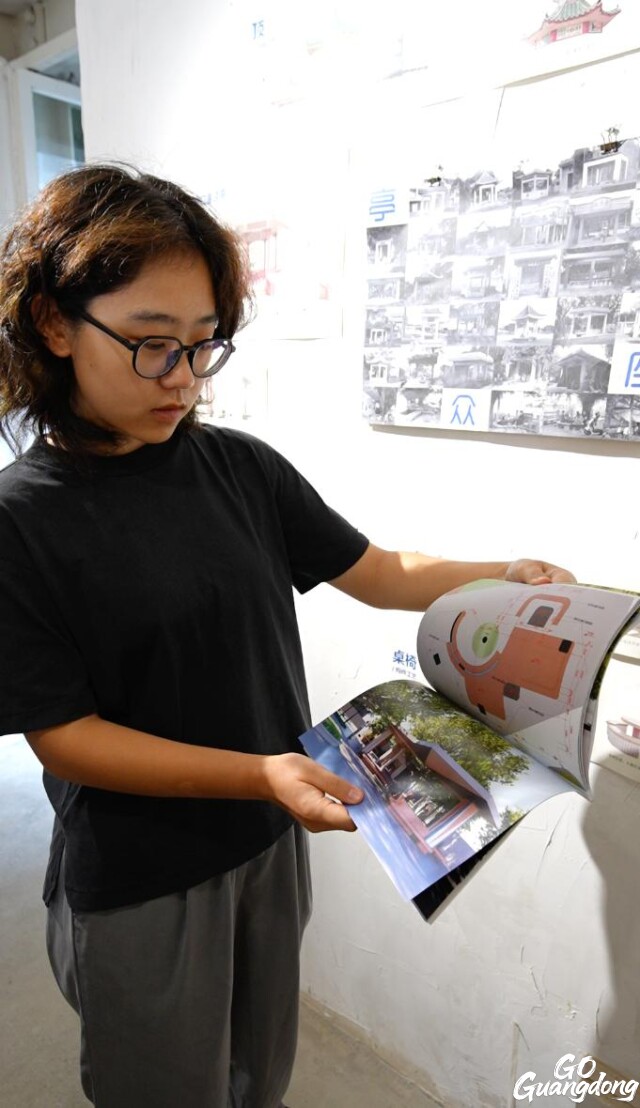
A staff member of Mume Design introduces their renovation project.
“Our renovation project of Tanxixu Market and tourist toilets explores how traditional market economies can thrive sustainably while supporting regional continuity. We analyzed rural public spaces’ daily functions and aesthetics, studying sales methods, shop sizes, and consumer behavior to enhance market vitality through a bottom-up design approach. This strategy strengthens local economies while preserving rural charm,” said a staff member of Mume Design.
Another project, the Tangkou Town Memorial Pavilion, highlights the cultural significance of these communal spaces. Traditionally serving as shaded gathering spots and symbols of collective memory—funded by villagers and overseas donations—the pavilions represent "dispersion and return" in overseas Chinese hometowns. Mume Design conducted technical surveys across 16 villages to develop standardized yet adaptable solutions for materials, construction, and design, ensuring scalability while respecting local identity.
Librairie Avant-Garde: Barns revitalized for cultural revival, community engagement
According to Tangkou Town, it has witnessed the emergence of 372 new startups and introduced over 30 professionals in cultural tourism and design, which have driven employment for more than 2,000 people.
Nanjing's Librairie Avant-Garde, named by CNN as “China's Most Beautiful Bookstore”, and listed by BBC among the “Top 10 Most Beautiful Bookstores in the World”, has also opened a branch in Tangkou.
The Grand Granary Bookstore of Librairie Avant-Garde is a cultural landmark transformed from five grain storage buildings built in the 1970s. It blends rural charm with urban intellectual vitality, serving as a bridge between history and modernity while offering a serene retreat for book lovers and photographers.
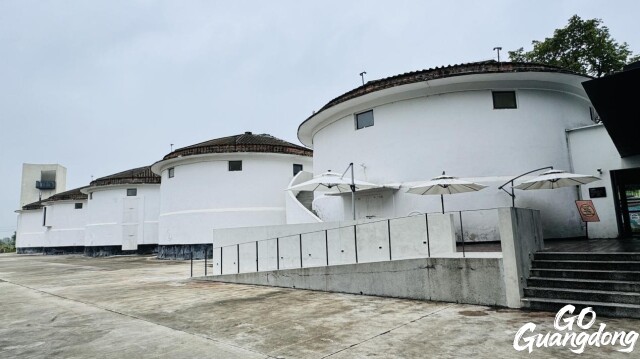
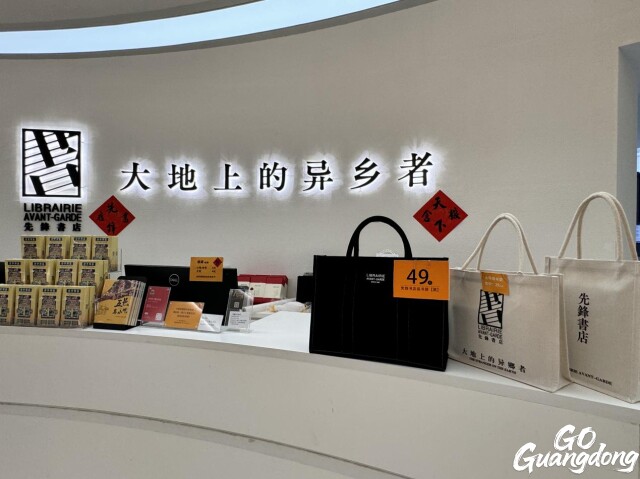
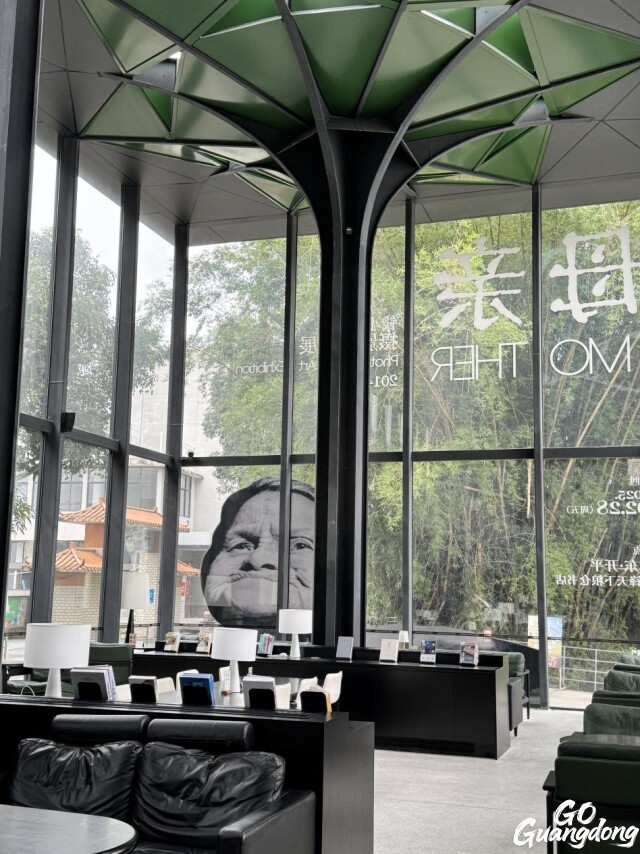
The Grand Granary Bookstore of Librairie Avant-Garde
Covering an area of 1,553 square meters, the bookstore integrates reading, exhibitions, and the retail of creative products, housing approximately 38,000 volumes categorized into five themed sections: poetry, social sciences, literature, life & children's books, and art. Designed by architect Yang Zhijiang, the cylindrical granaries retain their industrial heritage while incorporating modern elements such as spiral staircases, skylights, and minimalist interiors. The space hosts cultural events, including literary salons and author signings, and features locally inspired merchandise, such as bookmarks and souvenirs.
Under the concept of IE Commune, an innovative platform that welcomes young talents of different personalities and backgrounds, the Grand Granary Bookstore of Librairie Avant-Garde, along with other public spaces in Tangkou, provides shared resources and an entrepreneurial environment for aspiring young entrepreneurs.
Whether you’re an extrovert or an introvert, you can find a place that suits your pace at IE Commune, which breaks geographical, industrial, and identity barriers. By blending digital elements with rural culture to develop Tangkou Town, the commune offers affordable entrepreneurial spaces, shared facilities, and policy subsidies of up to 30%. In this way, IE Commune integrates public services and creates trendy industrial spaces, fostering a vibrant community that promotes agriculture, industry, culture, and tourism.
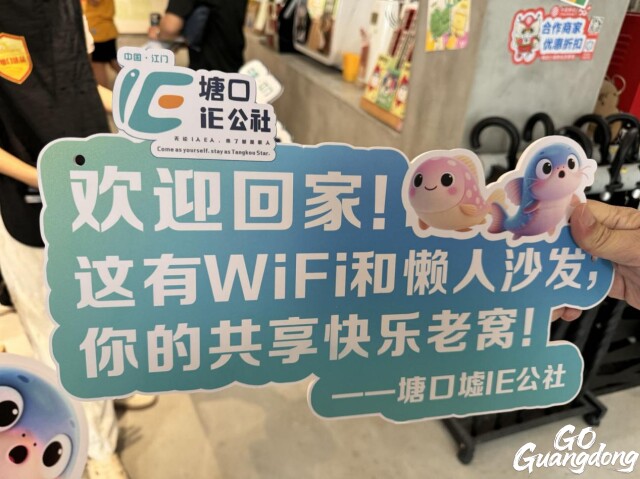
One of the slogans of IE Commune: Welcome home! Here, you have Wi-Fi and bean bag sofa—your shared haven for joy and relaxation.
Reported by Zhou Hongdou
Edited by Yin Juewen










